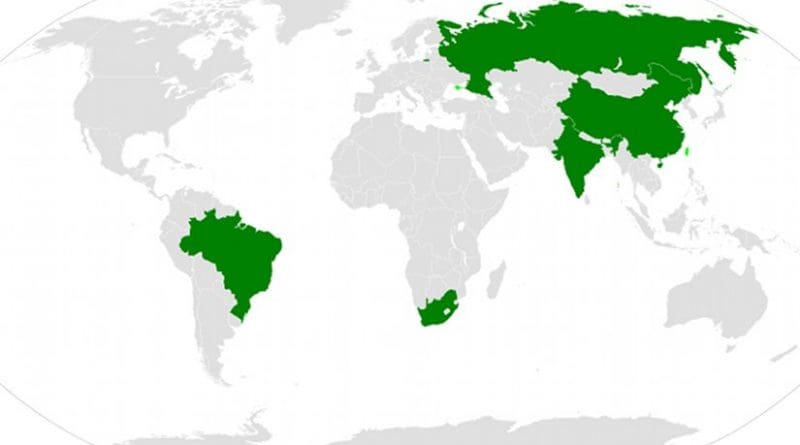The 2017 BRICS Summit: A Stronger Partnership For A Better Future – Analysis
China is the rotating president of the BRICS group right now, and it was also the host country of this year’s summit. In addition, China has been the pioneer of the BRICS as a policy coordinator which has made some new endeavors to create new proposals for cooperation.
As the BRICS community becomes more integrated, it has grown into an economic engine for the world. BRICS represents over 40% of the world’s total population, around 20% of the globe’s GDP, and contributes over half of the global growth. This will continue with the efforts by all the member countries (Brazil, Russia, India, China, and South Africa).
Another direction the BRICS is developing its cooperation in new areas because the BRICS started out as an economic concept and we have seen cooperation mainly happen on trade, infrastructure, and investment. But now, the BRICS has gradually evolved into a political and geopolitical organization as well. Most recently, there has been more people to people exchanges between the world leaders which has made the BRICS group a great success.
The five BRICS members were not the only ones participating in this year’s events, but five other non-BRICS countries will be in attendance as well as a part of the BRICS+ group. This signals some possibilities for BRICS to expand its horizon to other parts of the globe like Mexico, Guinea, Thailand, Tajikistan, and Egypt. Even though the countries face different problems and face different challenges, the BRICS summit provided more opportunities for world leaders to sit down, exchange ideas, and come together to tackle global issues.
One of the main goals of this year’s summit was to deepen partnerships and global governance. Now that we live in a multipolar world, the global community needs more voices from the emerging markets, and the BRICS bloc creates a framework for all the developing countries not only in trade and economic relationships, but in political relationships as well. The BRICS countries realize that if they can all work together, the bloc can play a constructive role in global governance, especially since western leadership is in slow decline.
Chinese president Xi Jingping pointed out that the potential for the BRICS framework has yet to be fully utilized and there are many different avenues to see how the potential for countries from all corners of the globe can work together to unite the bloc. The five BRICS countries have differences in many areas including security and strategic cooperation, but the commonality of the challenges and the need to move forward in this rapidly changing world bind the nations together in the BRICS framework.
The more Brazil, Russia, India, China, and South Africa can talk and share innovative ideas, the more they can help each other; and the more the BRICS nations stand up on the global stage with one voice, the better they will serve themselves and the emerging markets.
The BRICS nations goal of institutionalizing what has already been achieved over the past ten years will remain a very important task going forward. One example would be institutionalizing standards which can allow more emerging markets to join BRICS like Indonesia, and a question going forward is how the BRICS nations can share their experiences not only amongst themselves, but with other developing countries. In the next ten years, the BRICS will become a more important political force on the global stage and they will play a more important role to promote trade, economic relations, and international cooperation.
What is special about the BRICS bloc is that they have alternatives for developing countries like the New Development Bank (NDB) and the Asian Infrastructure Investment Bank (AIIB) as a contrary to the International Monetary Fund (IMF) and the World Bank. Moreover, when talking about the BRICS, it is also important to keep the Shanghai Cooperation Organization in mind as another institution that is so closely linked to the BRICS model by virtue of China, India, and Russia. Both the BRICS and SCO are more than just economic clubs, but it is a close alliance of countries who want to pursue common goals.
We also know that the BRICS is expanding because the Chinese proposed the BRICS+ as a model that allowed five other non-BRICS countries to attend the summit such as Tajikistan, Mexico, Thailand, Guinea, and Egypt. The BRICS bloc is now a growing trend in international affairs, and this is a significant outbreak for the developing world.
We need to understand that BRICS is not just about China, it is about the five countries and more importantly, it is also about the growth of developing and emerging markets. Secondly, the world we live in today is faced with so many challenges and changes from security issues like terrorism to environmental issues like climate change. Ten years later, the world will be very different than what it was after the Second World War. In this process of transformation, BRICS will become more important as a role model for developing and emerging markets as alternatives to the current western model, and in the coming years, BRICS will play a substantial role to the global issues we face today.

